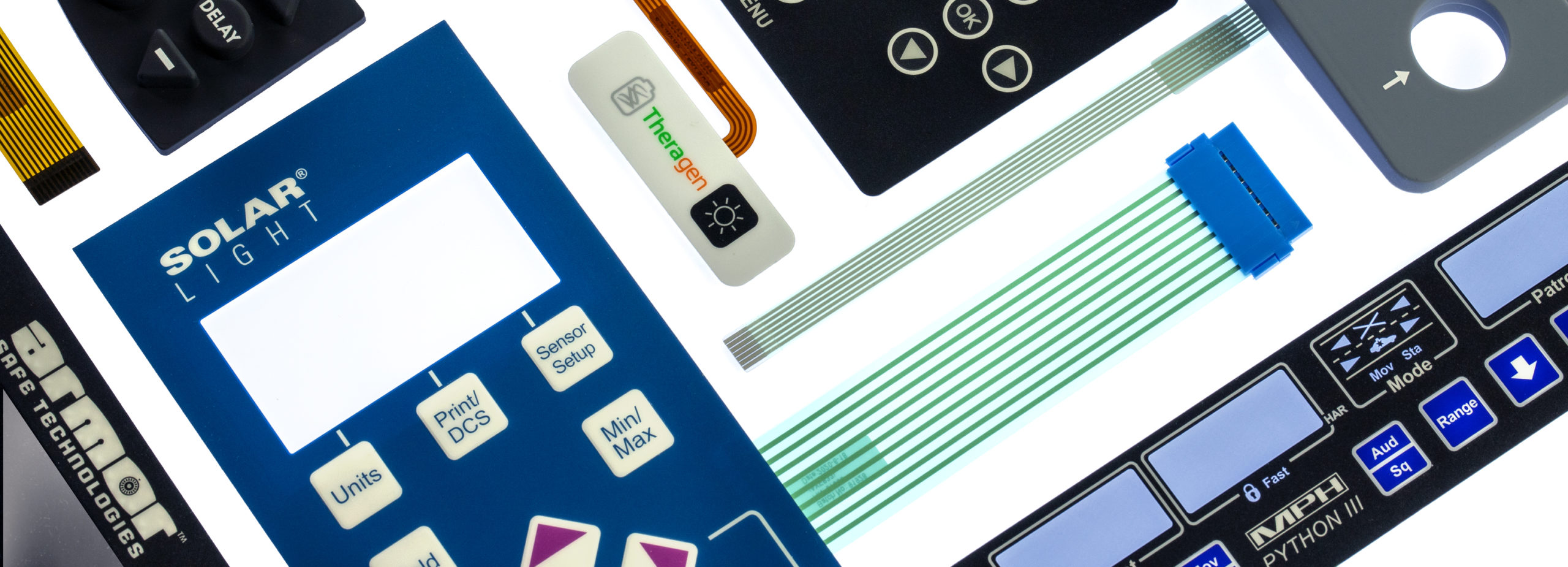Understanding Membrane Layer Switches Over: The Key to Sturdy and Reliable Controls

What Are Membrane Buttons?
Membrane switches are a sophisticated remedy in the world of customer interface modern technology, combining performance and design perfectly. These gadgets function as an interface between customers and digital systems, integrating numerous elements into a portable style. Typically built from versatile, slim layers of materials, membrane switches are made to reply to touch, enabling individuals to connect with machinery and digital tools effectively.
The main elements of a membrane button consist of a printed circuit layer, graphic overlay, and a spacer layer that prevents unintentional activation. The graphic overlay can be personalized to show brand identity or user choices, improving aesthetics while making sure usability. Membrane layer buttons are generally used in various applications, including medical gadgets, customer electronics, and industrial equipment, owing to their sturdiness and resistance to environmental aspects such as moisture and dust.
Among the essential advantages of membrane switches is their capacity to withstand deterioration, making them excellent for high-traffic atmospheres. In addition, they are light-weight and need minimal area, enabling cutting-edge layouts in product growth. Generally, membrane switches over represent a efficient and practical option for modern-day electronic user interfaces, marrying innovation with user-centric style concepts.
Exactly How Membrane Layer Switches Over Job
The operation of membrane layer switches over joints on a simple yet reliable system that equates user input into digital signals. When a user presses the switch, the leading layer warps, enabling a conductive component in the circuit layer to make call with a matching conductive pad on the bottom of the graphic overlay.
The style of membrane layer switches can vary, however they usually integrate domes or responsive components to offer responses to the individual, boosting the general experience - membrane switch. The products made use of in membrane layer buttons, such as polyester or polycarbonate, add to their toughness and resistance to environmental variables, consisting of moisture and dirt. The printed circuits are commonly encapsulated, which secures them from wear and tear over time.
Benefits of Membrane Layer Switches

Furthermore, membrane switches are known for their durability. Constructed from robust products, they are resistant to dirt, dampness, and physical wear, which substantially prolongs their life expectancy compared to conventional mechanical switches. This sturdiness makes them especially ideal for high-traffic settings and applications requiring long life.
One more substantial advantage is the ease of cleaning and upkeep. The smooth surface area of membrane changes minimizes dirt accumulation and is often invulnerable to spills, making them perfect for setups that require constant sanitization.
Furthermore, membrane layer buttons use a structured account, resulting in a thinner layout that can be integrated right into numerous devices without adding bulk. This attribute not only boosts the visual charm yet additionally adds to a much more ergonomic item layout.
Applications of Membrane Layer Switches
Versatile and user-friendly, membrane buttons find applications throughout a variety of industries, including medical tools, customer electronics, and commercial equipment. In the medical field, these buttons are indispensable to tools such as diagnostic tools, patient monitoring systems, and infusion pumps, where integrity and ease of cleaning are vital. Their capacity to maintain and stand up to severe atmospheres capability makes them optimal for such applications.

In customer electronics, membrane switches are made use of in products like microwaves, washing devices, and remote controls - membrane switch. Their streamlined layout image source permits for instinctive interface, boosting the total user experience while offering toughness and resistance to put on and tear
Commercial tools also takes advantage of membrane buttons, specifically in control panels for equipment and automation systems. These buttons use protection against dirt and wetness, guaranteeing consistent efficiency in challenging environments. Furthermore, their customizable functions enable producers to customize them to particular functional demands, enhancing performance and functionality.
Choosing the Right Membrane Layer Change
When selecting a membrane layer switch, it is important to take weblink into consideration different variables that influence performance and suitability for specific applications. The main considerations consist of environmental problems, tactile feedback, durability, and design specs.
First, evaluate the operating environment; buttons exposed to wetness, chemicals, or severe temperature levels require particular products to ensure longevity and capability. Next, assess the demand for responsive comments. Depending on customer interaction, some applications may benefit from a tactile action to verify activation, while others might choose a non-tactile style for visual factors.
Longevity is another essential variable; membrane switches must be developed to endure constant use, influences, and abrasion. Ensure the chosen switch can sustain the expected lifecycle, particularly in high-usage circumstances.

Final Thought
In verdict, membrane layer changes offer as essential parts in the layout of durable and dependable control systems across numerous markets. The flexibility of membrane layer changes permits for tailored remedies that fulfill details operational requirements, enhancing their importance in modern-day innovation.
Membrane switches stand for a vital aspect of modern interface style, mixing functionality with strength in different applications.Membrane layer buttons are an innovative remedy in the world of individual interface modern technology, incorporating functionality and layout perfectly. Commonly constructed from versatile, slim layers of products, membrane buttons are developed to react to touch, enabling individuals to connect with equipment and electronic devices effectively.
The layout of membrane next switches can vary, however they typically integrate domes or responsive components to offer feedback to the user, improving the general experience.In verdict, membrane switches offer as important parts in the layout of reputable and resilient control systems throughout numerous industries.